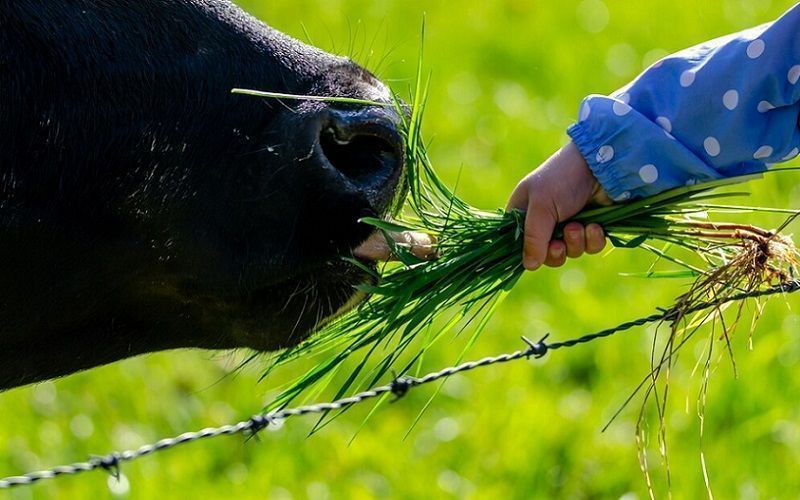South Africa’s Feed Industry Focuses on Optimisation Amid Growth and Diversification
Sourse: DairyNews.today
The South African animal feed market, a cornerstone of the country’s agricultural sector, continues to evolve as it adapts to shifting demands and priorities. The industry is primarily divided into three key segments: feed manufacturers, feedlots, and informal feed milling, according to a recent report by the U.S. Department of Agriculture’s Global Agricultural Information Network (GAIN).

Feed Manufacturers: A Market Leader
Feed manufacturers dominate the industry, accounting for 60% of South Africa’s annual animal feed production, which totals approximately 13 million metric tons (MMT). These manufacturers are represented by the Animal Feed Manufacturing Association (AFMA) and are split into two categories: balanced feed manufacturers and pre-mix producers.
Poultry feed is particularly significant, with broiler and layer feed contributing over 5 MMT, or 40% of total feed sales. This reflects the poultry industry’s highly concentrated and vertically integrated structure, where five major players manage 70% of local poultry production.
These integrated businesses span the entire production chain, encompassing feed mills, hatcheries, farms, abattoirs, and distribution networks. This model enables economies of scale while ensuring consistent quality across operations. Excess feed from these vertically integrated systems is sold to non-integrated poultry producers, further contributing to market supply.
Feedlots: A Vital Contributor to Beef Production
The feedlot sector, producing approximately 75% of South Africa’s beef, operates as an intensive system focused on livestock growth and fattening for slaughter. Feed produced within feedlots is typically used as an on-farm input, limiting its participation in the broader feed market. The South African Feedlot Association (SA Feedlot) oversees the operations of around 100 locally operated feedlots.
Informal Feed Milling
Informal feed milling, largely practiced on farms, caters primarily to internal consumption. This segment remains a critical, albeit smaller, contributor to the industry.
Raw Materials and Formulation
The feed industry relies on a diverse range of raw materials, including primary commodities like yellow corn, full-fat soybeans, and other grains. By-products from processing industries such as oilseed meals, flour, germ, molasses, bagasse, and animal meal are also key inputs. Supplements from mining (limestone and phosphates) and chemicals (vitamins and medicines) are integrated into scientifically formulated feeds tailored to the nutritional needs of specific animals and growth stages.
Sector Breakdown and Demand Drivers
Beyond poultry, significant feed demand stems from cattle and sheep feedlots (3.2 MMT), dairy farms (2.6 MMT), and pig farming (1.2 MMT). Each segment requires precisely formulated feed to optimise productivity and animal development.
A Growth-Oriented Future
The South African feed industry’s role in underpinning agricultural productivity, particularly in the poultry and beef sectors, underscores its importance to the national economy. Ongoing optimisation and diversification, including greater reliance on scientific formulations and integration across production chains, are expected to sustain growth in this essential market.
Feed manufacturers dominate the industry, accounting for 60% of South Africa’s annual animal feed production, which totals approximately 13 million metric tons (MMT). These manufacturers are represented by the Animal Feed Manufacturing Association (AFMA) and are split into two categories: balanced feed manufacturers and pre-mix producers.
Poultry feed is particularly significant, with broiler and layer feed contributing over 5 MMT, or 40% of total feed sales. This reflects the poultry industry’s highly concentrated and vertically integrated structure, where five major players manage 70% of local poultry production.
These integrated businesses span the entire production chain, encompassing feed mills, hatcheries, farms, abattoirs, and distribution networks. This model enables economies of scale while ensuring consistent quality across operations. Excess feed from these vertically integrated systems is sold to non-integrated poultry producers, further contributing to market supply.
Feedlots: A Vital Contributor to Beef Production
The feedlot sector, producing approximately 75% of South Africa’s beef, operates as an intensive system focused on livestock growth and fattening for slaughter. Feed produced within feedlots is typically used as an on-farm input, limiting its participation in the broader feed market. The South African Feedlot Association (SA Feedlot) oversees the operations of around 100 locally operated feedlots.
Informal Feed Milling
Informal feed milling, largely practiced on farms, caters primarily to internal consumption. This segment remains a critical, albeit smaller, contributor to the industry.
Raw Materials and Formulation
The feed industry relies on a diverse range of raw materials, including primary commodities like yellow corn, full-fat soybeans, and other grains. By-products from processing industries such as oilseed meals, flour, germ, molasses, bagasse, and animal meal are also key inputs. Supplements from mining (limestone and phosphates) and chemicals (vitamins and medicines) are integrated into scientifically formulated feeds tailored to the nutritional needs of specific animals and growth stages.
Sector Breakdown and Demand Drivers
Beyond poultry, significant feed demand stems from cattle and sheep feedlots (3.2 MMT), dairy farms (2.6 MMT), and pig farming (1.2 MMT). Each segment requires precisely formulated feed to optimise productivity and animal development.
A Growth-Oriented Future
The South African feed industry’s role in underpinning agricultural productivity, particularly in the poultry and beef sectors, underscores its importance to the national economy. Ongoing optimisation and diversification, including greater reliance on scientific formulations and integration across production chains, are expected to sustain growth in this essential market.
Key News of the Week











